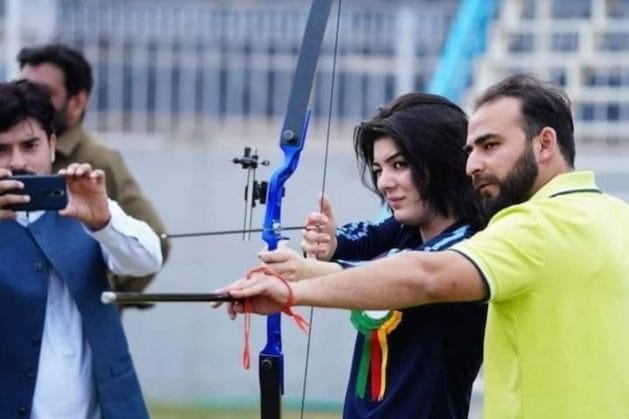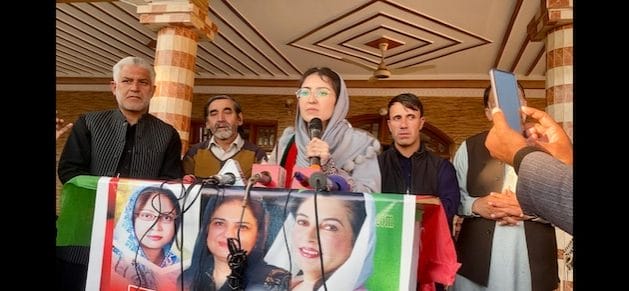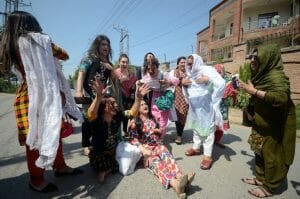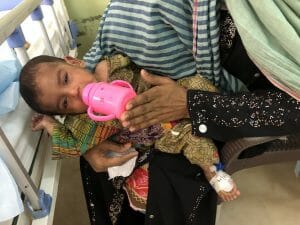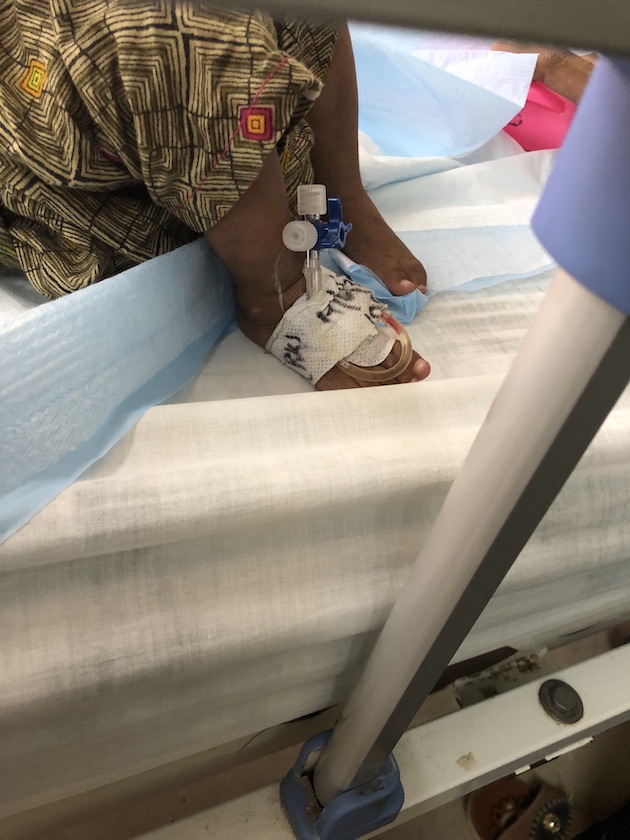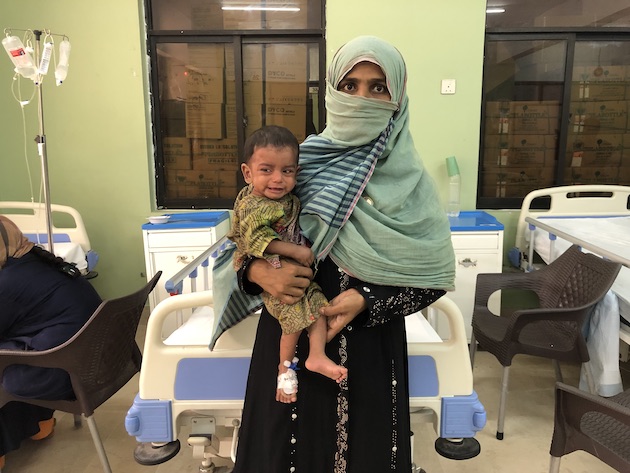
Asia-Pacific, Civil Society, Climate Change, Development & Aid, Economy & Trade, Editors’ Choice, Environment, Featured, Food and Agriculture, Food Security and Nutrition, Food Sustainability, Headlines, Health, Natural Resources, Sustainable Development Goals, TerraViva United Nations

The extreme heat adversely affected the milk production of the over 800,000 cattle in Karachi. Credit: Zofeen Ebrahim/IPS
– The over 20 million residents of Pakistan’s port city of Karachi, in Sindh province in particular, have been experiencing brutal heat since May. But they are not the only ones bearing the brunt of high temperatures and humidity.
Up to 15,000 cattle died due to scorching heat mixed with high humidity which Shakir Umar Gujjar, president of the Cattle and Dairy Farmers Association, Pakistan, said was “no joke”.
Mubashir Abbas, owner of 170 heads, lost eight cows and five buffaloes to the “extreme heat” in the last week of June, which translates to a loss of Rs 5.5 million (USD 19,800) for him.
“Three more are running high fever and I will have to sell them to cut my losses,” he told IPS over phone from Bhains Colony, in Karachi’s Landhi district. “I will fetch no more than Rs 40,000 (USD 143) a piece, when the market rate for each healthy one is valued between Rs 1.5 and 2 million (USD 5,300–7,000),” he estimated. Every now and then, in the last 23 years, he would lose a few to disease, but he had never “seen a healthy animal dying from heat.”
Livestock, the largest sub-sector in agriculture, contributed 60.84 percent to agriculture and 14.63 percent to the country’s GDP during 2023-2024, according to the Pakistan Economic Survey. More than eight million rural families are engaged in livestock production, accounting for 35-40 percent of their total income.

About 15,000 cattle died due scorching heat mixed with high humidity in Sindh province, Pakistan. Credit: Zofeen Ebrahim/IPS
“From June 23 to 30, Karachi experienced a heatwave with temperatures ranging between 40 and 42 °C. The ‘feel-like’ temperature went up to 54 °C due to high humidity,” said Dr. Sardar Sarfaraz, chief meteorologist at the Pakistan Meteorological Department.
Dr. Nazeer Hussain Kalhoro, director general at the government’s Sindh Institute of Animal Health in the Livestock and Fisheries Department in Karachi, attributed extreme heat to the death of livestock, especially exotic and crossed breeds.
The temperature was still lower than the deadly 2015 heatwave temperature of 44.8 °C that claimed over 2,000 human lives when the feel-like heat index exceeded 60 °C, said Sarfaraz. “A much bigger number of animals died then, and many young animals had to be slaughtered,” said Gujjar.
The heat had adversely affected the milk production of the over 800,000 cattle in Karachi, said Gujjar. “When an animal is in stress and discomfort, due to extreme heat, its intake of regular amount of fodder decreases, which can result in decrease in milk production,” said Kalhoro.
“I was getting between 1,400 and 1,480 kg in a day; it is not more than 960 kg now. I lose 0.11 million rupees (USD 400) daily,” said Abbas.
Communication Gap
The lack of engagement with the farmer by the government was the reason. Gujjar said the communication gap between the ministry of national food security and research at the federal level and the livestock departments at the provincial departments meant the uneducated farmer was on his own.
“The biggest tragedy is that our farmer is not educated and also unaware of how to prepare or protect the animal from the vagaries of climate,” said Gujjar, adding: “They do their own traditional treatment of their animals, which results in even more avoidable deaths.”
Similar is the plight of small farmers who remain in the eye of the climate storm. “They are continuously in a reactive mode,” said Mahmood Nawaz Shah, president of a farmers’ group, the Sindh Abadgar Board, with “government policies not conducive to them”.
Giving examples, Shah said the minimum price of cotton was fixed and notified at Rs 8,500/kg (UAD 30) but growers received Rs 5,200/kg (USD 18); a 50-kilo bag of urea increased from Rs 1,700 to Rs 4,600 (USD 6 to 16) in just three years; and the artificial shortage for the same last year meant the farmer had to pay Rs 5,500 for the same bag from the black market.
“We had recommended to the government to develop a climate endowment fund and compensate small farmers by involving insurance companies as soon as extreme events lead to crop and livestock losses,” said Shah.
Both the farmers, Gujjar and Shah, have hit the nail on the head on why Pakistan, one of the most vulnerable to climate crises, is unable to manage it effectively. The disconnect and lack of coordination between different federal and their related provincial government bodies is found across the spectrum and is highlighted in the 2024 Climate Change Performance Index (CCPI) as a major reason that hampered policy implementation, placing Pakistan on the 30th position among 63 countries and the EU, which collectively account for over 90 percent of global greenhouse gas (GHG) emissions. “Improved cooperation between different levels of government would be a step in the right direction,” it concluded.
Similarly, the 2024 Environmental Performance Index that assesses the progress of effectiveness of 180 countries in mitigating climate change, relying on historical greenhouse gas emissions data, put Pakistan three rungs down at 179th rank this year from the 176th position it held in 2022.
Indifference and Apathy
Both the CCPI and the EPI are a clear giveaway of government’s nonchalance. The latter index has especially pointed to areas like air pollution, wastewater treatment, protected areas management and climate mitigation.
“The country is slipping on most environmental indicators,” agreed former climate change minister, Malik Amin Aslam, pointing to the weak air pollution control measures, non-adherence to the electric vehicles transition and failure to promote renewables. From being a country championing the global green cause in 2022 to now “ignominiously slipping down the environmental performance ladder” should certainly raise alarm bells for our current green policy makers, warned Aslam.
The 2022 floods, which should have acted as a wake-up call for the government, he said, failed to move the government towards preparedness and improving the health of the environment.
Maha Qasim, CEO of Zero-Point Partners, an environmental management and consulting firm, said: “No significant effort had been made in building climate-resilient infrastructure like roads, drainage systems and flood management facilities like levees or reservoirs.
The EPI has pointed towards Pakistan’s use of coal as a driver.
Putting things in perspective, Qasim said that in 2021, only around 14% of Pakistan’s energy mix was based on coal, while it figured 45 percent and 63 percent in India’s and Estonia’s energy mix. But in the last two years, Pakistan’s overall GHG emissions as well as CO2 have declined, due to “Pakistan’s overall performance capita emissions from fossil fuels and industry have declined due to stagnant economic growth,” she said.
Thus, Pakistan is well within its carbon budget and has met its Nationally Determined Contribution commitments to the UNFCCC.
The updated NDCs of 2021 have pledged to reduce emissions by 50%, shifting to renewable energy by 60 percent and 30 percent to electric vehicles by 2030, and a complete ban on importing coal.
Poor transport fuel regulations, old and inefficient vehicles on the road, mass cutting down of trees to make way for rapid urbanization, burning of agricultural residue and poor solid waste management have also been mentioned for Pakistan’s poor score.
Aslam, however, said the index failed to “register or recognize” Pakistan’s efforts on reforestation—the Billion Tree Tsunami Afforestation Project in Khyber Pakhtunkhwa province, followed by 10 Billion Tree Tsunami Programme across the country. “The EPI ranking can certainly enhance its acceptability and credibility by improving these areas,” he said.
Weak Governance
Sobia Kapadia, a humanitarian aid practitioner, added factors like “weak governance, turning to fire-fighting and ad-hoc measures” whenever a climate crisis arises, thereby destroying the symbiosis.
“Heat, rain and floods are all connected to the core issue of human-induced development; but blaming heat and humidity on climate change is like blaming the naughtiest child,” said Kapadia, citing resorts being constructed in the mountains by cutting trees.
In yet another recent report that gives insights to investors and helps governments in setting carbon market-friendly policies, Pakistan comes 39th out of 40 countries.
Khalid Waleed, an energy economics expert at the Sustainable Development Policy Institute (SDPI), was quoted by media saying “for the first time in budget history, the government has tagged projects worth Rs53 billion under climate change adaptation and Rs225 billion under climate change mitigation,” referring to the budget presented earlier this month. However, he added that the budget was not climate change project-specific but had been tagged for their climate benefits.
Zia ul Islam finds the budget allocation “rather tricky” to understand as it not only indicates development projects from the Ministry of Planning Development & Special Initiatives, but foreign-funded projects and projects under various ministries and provinces.
Environmental and public policy analyst Dawar Butt, comparing the country’s miniscule environmental spending to India and Bangladesh, said climate did not seem to be a priority. He further added that the climate change allocation has been “cut down by one billion rupees from what finally got approved in this year’s budget.”
Handling Climate Change on Piecemeal Basis
But it is not just how the government is handling climate change. Referring to a climate risk awareness survey conducted by GIZ Pakistan, Qasim highlighted that while many organizations are beginning to acknowledge the impact of climate change on their business models, their approach towards dealing with it was “incomplete and fragmented with a focus on climate mitigation” to meet external requirements of clients or regulators rather than on long-term business sustainability.
Due to the funding fatigue, Zia ul Islam suggested the “begging attitude” may be replaced by capacity building of concerned authorities, bringing in necessary improvements in the legal instruments and effective implementation.”
Good News
If Pakistan can somehow link smooth governance with climate finance and showcase to the world that it can fund its own climate solutions, it will give local and international companies the confidence to invest in the country. This year’s Financing Climate Action report by Transparency International states Pakistan has a huge potential to “dollarize climate adaptive and mitigative projects” provided climate governance is improved.
Flood insurance initiatives for farmers, for example, said Qasim, at very low markup rates, have the potential to be “scaled up across the country to increase flood resilience.”
IPS UN Bureau Report


